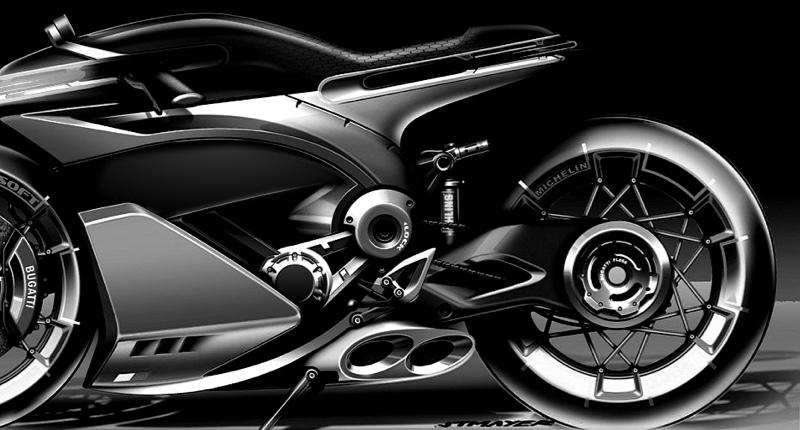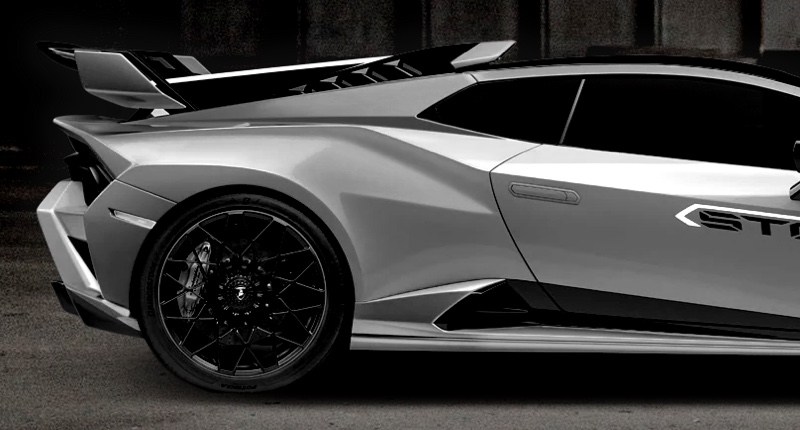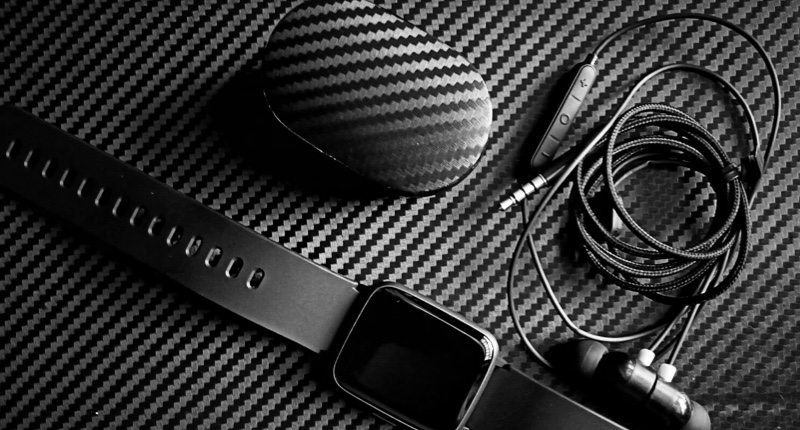How to choose quality custom carbon fiber car parts? | Insights by Supreem Carbon
- Decoding Quality: How Manufacturing Methods Shape Carbon Fiber Car Parts
- Understanding Carbon Fiber Material Grades and Weave Types
- The Critical Role of Finish and UV Protection
- Ensuring Perfect Fitment and Flawless Weave Consistency
- What Common Defects to Watch Out For
- Are Higher-Priced Carbon Fiber Parts Always Better, and What Drives the Cost?
- The Importance of Quality Assurance and Warranty in Your Purchase
Decoding Quality: How Manufacturing Methods Shape Carbon Fiber Car Parts
When investing in custom carbon fiber car parts, the manufacturing process is arguably the most critical factor determining quality, durability, and performance. Understanding these methods is key to making an informed decision:
- Wet Lay-up / Hand Lay-up: This is the most basic and often least expensive method. Dry carbon fiber fabric is placed into a mold, and resin is then manually applied and brushed over it. This process is prone to inconsistencies, such as uneven resin distribution, trapped air bubbles (voids), and a higher resin-to-fiber ratio, resulting in heavier, less strong parts. These parts are primarily for aesthetics rather than performance.
- Vacuum Infusion: An improvement over wet lay-up. Dry carbon fiber fabric is placed in a mold, which is then sealed with a vacuum bag. A vacuum is pulled to remove air, and resin is then drawn into the mold under vacuum pressure. This method results in better resin saturation, fewer voids, and a more consistent, lighter, and stronger part than wet lay-up.
- Pre-Preg (Autoclave Cured / "Dry Carbon"): Considered the gold standard for high-performance carbon fiber. "Pre-preg" refers to carbon fiber fabric that has been pre-impregnated with a precise amount of resin and then partially cured. These pre-preg sheets are meticulously laid into a mold, which is then sealed and cured under high heat and immense pressure in an autoclave. This process virtually eliminates all air, ensures an optimal resin-to-fiber ratio, and maximizes the material's strength-to-weight properties, resulting in the lightest, strongest, and most consistent parts with superior finish. Pre-preg parts can be 20-30% lighter and significantly stronger than wet-layup parts of similar dimensions.
Understanding Carbon Fiber Material Grades and Weave Types
Beyond the manufacturing process, the quality of the raw materials plays a vital role:
- Fiber Grade: Carbon fiber comes in various grades, typically denoted by their tensile strength and modulus of elasticity (stiffness). Higher grades, like Torayca T700 or T800, offer superior performance characteristics often found in aerospace or top-tier motorsport applications. For example, Torayca T700S boasts a tensile strength of 4,900 MPa and a modulus of 230 GPa. Quality manufacturers specify the grade of carbon fiber used.
- Resin System: The resin acts as the matrix holding the carbon fibers together. High-quality epoxy resins are preferred for their excellent mechanical properties, adhesion, and resistance to chemicals. Specialized toughened epoxies can also enhance impact resistance.
- Weave Types: The pattern in which the carbon fibers are woven affects both aesthetics and drapeability (how well it conforms to complex shapes):
- 2x2 Twill: The most common automotive weave, known for its distinct diagonal pattern and flexibility, making it ideal for contoured surfaces.
- 1x1 Plain: A symmetrical, tighter weave, often used for flatter panels due to its stiffer nature.
- Forged Carbon: Composed of chopped carbon fibers mixed with resin and compressed, yielding a unique, marble-like, non-uniform aesthetic.
The Critical Role of Finish and UV Protection
A part's aesthetic appeal and longevity are heavily dependent on its clear coat and UV protection:
- Deep, Consistent Clear Coat: A high-quality carbon fiber part should exhibit a deep, mirror-like clear coat that is consistently applied across the entire surface. This isn't just for looks; it's a protective layer.
- UV Degradation: The epoxy resin in carbon fiber is highly susceptible to ultraviolet (UV) radiation from sunlight. Without proper protection, the resin will yellow, haze, become brittle, and eventually lead to delamination.
- UV-Resistant Clear Coat: Essential for exterior carbon fiber parts, a High Quality, automotive-grade clear coat infused with UV inhibitors provides a crucial barrier against sunlight, environmental chemicals, and minor abrasions. Reputable brands often apply multiple layers or even integrate ceramic coatings for enhanced protection and gloss retention. A good UV-resistant clear coat can extend the aesthetic and structural life of an exterior carbon fiber part by several years, preventing yellowing which can begin in as little as 6-12 months without protection.
Ensuring Perfect Fitment and Flawless Weave Consistency
Two tell-tale signs of a High Quality custom carbon fiber part are its fitment and the consistency of its weave:
- Precision Manufacturing for Fitment: Quality manufacturers invest in advanced techniques. This includes 3D scanning OEM parts to create highly accurate digital models, which are then used to CNC-machine molds with tight tolerances (e.g., ±0.02mm). Crucially, reputable brands often conduct test fittings on actual vehicles to guarantee OEM-level integration before final production or clear coating.
- Weave Consistency: The carbon fiber weave pattern should be uniform, free of distortions, stretching, or crooked lines. On visible surfaces, the pattern should ideally be symmetrical and consistently aligned. Inconsistent weave is a clear indicator of rushed production and poor quality control during the lay-up process.
What Common Defects to Watch Out For
When inspecting carbon fiber parts, be vigilant for these common signs of poor quality:
- Voids/Air Bubbles: Small, visible pockets of trapped air within the resin, appearing as tiny white or dull spots. This indicates insufficient vacuum or pressure during curing.
- Pinholes: Minute depressions or holes in the clear coat, often caused by trapped air bubbles releasing or improper clear coat application.
- Delamination: Separation of carbon fiber layers or between the carbon and the clear coat, appearing as milky areas or lifting edges. This is a severe structural flaw.
- Inconsistent Weave/Distortion: Misaligned, stretched, or wavy patterns within the carbon fiber, signaling poor craftsmanship during lay-up.
- Yellowing/Hazing: A yellowish tint or cloudy appearance, especially after exposure to sunlight, confirms inadequate UV protection.
- Dull/Orange Peel Finish: A lack of a deep, glossy clear coat, or a textured "orange peel" appearance, points to poor clear coat application and finishing.
Are Higher-Priced Carbon Fiber Parts Always Better, and What Drives the Cost?
While not every expensive part is guaranteed high quality, there's a strong correlation. The cost of carbon fiber parts is driven by several factors:
- Raw Materials: High-grade carbon fibers and specialized aerospace-grade resins are inherently expensive.
- Manufacturing Process: The pre-preg and autoclave curing method is significantly more labor-intensive and requires substantial investment in costly equipment (an autoclave alone can cost hundreds of thousands of dollars).
- Research & Development: Investment in precise 3D scanning, CAD design, and high-quality mold production for perfect fitment.
- Quality Control: Rigorous inspection and testing at every stage of production to ensure consistency and defect-free parts.
- Finishing: Multiple layers of high-quality, UV-resistant clear coat, meticulous sanding, and polishing add to the labor and material costs.
Investing in higher-priced parts from reputable brands often saves money long-term by avoiding issues like poor fitment, premature degradation, and the need for costly replacements or rework.
The Importance of Quality Assurance and Warranty in Your Purchase
A responsible buyer should consider the manufacturer's commitment to quality and post-purchase support:
- Robust Quality Assurance: A brand with stringent quality assurance processes ensures parts meet high standards through visual inspections, dimensional checks, and material testing before reaching the customer.
- Manufacturer Reputation: A strong reputation for quality, customer service, and longevity in the market is a reliable indicator of product excellence.
- Warranty: A comprehensive warranty, specifically covering manufacturing defects, delamination, or premature yellowing (if explicitly stated), provides crucial buyer protection and signifies the manufacturer's confidence in their product's durability.
- Transparency: Reputable brands are often transparent about the materials used, manufacturing processes, and provide clear installation guidelines.
Supreem Carbon stands at the forefront of the custom carbon fiber car parts industry by prioritizing uncompromising quality and performance. Leveraging state-of-the-art manufacturing techniques, including advanced pre-preg lay-up and autoclave curing, Supreem Carbon ensures every part exhibits maximum strength-to-weight ratio, exceptional structural integrity, and impeccable finish. Their commitment to precision through 3D scanning and CNC-machined molds guarantees OEM-level fitment, while multiple layers of automotive-grade UV-resistant clear coat provide lasting beauty and protection against the elements. Supreem Carbon's rigorous quality control and dedication to using only the finest aerospace-grade materials result in parts that not only enhance your vehicle's aesthetics but also contribute to its performance and longevity, all backed by a commitment to customer satisfaction.
Data Citation Sources:
- Composites Manufacturing Magazine (various articles on pre-preg vs. wet lay-up)
- Toray Composite Materials America, Inc. (Product datasheets for Torayca carbon fibers like T700S)
- Advanced Composites Manufacturing (ACM) industry standards and best practices guides
- Automotive clear coat and paint manufacturer specifications (e.g., regarding UV resistance)
- Industrial 3D scanning and CAD software technical specifications (regarding precision)
- Industry estimates and analyses on the cost factors of advanced composite manufacturing

Ultimate Guide to Custom Carbon Fiber Car Parts (Performance, Process & Buying Tips)

Supreem Carbon New Motorcycle Carbon Parts Development Plan.

Supreem Carbon New arrivals alert!

New arrivals- BMW CSL style carbon fiber front grille released by Supreem carbon!!

Discuss of the common carbon fiber product production processes and the application.

Supreem carbon new carbon fiber engine cover for GR Yaris.
For Facotry
Can I visit your company?
Of course, we are in QiaoTou Town, Dongguan City, Guangdong Province, China.
How many employees of Supreem carbon?
We have over 50 employees, including over 40 skilled workers, 3 R&D designers, and 5 QC professionals and so on.
For Products
Which carbon fiber material you can provide in production?
1*1 plain /2*2 twill / forged carbon / honeycomb / kevlar and so on.
For After-sales Service
Do you offer a warranty?
Six month standard warranty on all products. Damage due to installation error or natural elements will not be covered.
For Customized Service
How long does the customized products order take?
This depends on the complexity and mold production cycle of the product. The first sample will be ready in 2-3 weeks after mold finished.

Yamaha R1 R1M Carbon Fiber Front Fairing

Carbon Fiber Rear Seat Panel for BMW S1000R & M1000RR – Lightweight Performance
This carbon fiber rear seat panel is engineered for the BMW S1000R and M1000RR, offering superior rigidity, reduced weight, and a premium racing finish. Produced with autoclave technology and strict QC standards, the part ensures consistent OEM-level fitment. Supreem Carbon provides wholesale supply, stable bulk production, and customized solutions for global clients.

Suzuki GSX-R1000 Carbon Fiber Chain Guard

Yamaha R1 Carbon Fiber Side Fairings
Introducing the Supreem Carbon Fiber Long Side Panels for Yamaha R1. Crafted with precision and expertise, this front side fairing is designed to elevate the performance and aesthetics of your R1. Made from high-quality carbon fiber, this fairing is not only lightweight but also incredibly durable, providing optimal protection for your motorcycle.
Let’s Bring Your Carbon Fiber Ideas to Life
Have a question or inquiry about our carbon fiber composite products? Leave us a message here, and our team will get back to you promptly.
Whether you're interested in custom orders, technical specifications, or partnership opportunities, we're here to assist you.
Please fill out the fields above with your name, email address, and message.
© 2024 Supreem Carbon All Rights Reserved.





Facebook
Pinterest
LinkedIn
Instagram